For those facing the challenges of chronic pain, finding relief becomes a crucial quest. Chronic Pain Relief is like a guiding light, and massage therapy emerges as a beacon of hope among the various solutions. It employs techniques like acupressure and trigger point treatment, offering more than just a temporary break from pain. Massage therapy promises long-term benefits by tapping into the body’s natural healing mechanisms, such as the release of endorphins and improved blood circulation. To understand how it breaks the cycle of chronic pain and becomes an essential part of a holistic approach to pain management, it’s vital to delve into the underlying mechanisms and hear real-life success stories highlighting its transformative potential.
Key Takeaways
- Massage therapy targets muscle tension and fascia discomfort, relieving chronic pain through techniques like acupressure.
- It improves circulation and promotes healing by breaking up scar tissue and reducing inflammation.
- Regular sessions release endorphins and oxytocin, disrupting pain signals and enhancing overall well-being.
- Integrating massage with other treatments offers a comprehensive approach to managing chronic pain effectively.
Understanding Chronic Pain
Chronic pain, a persistent and often debilitating condition, affects millions globally, underscoring the importance of understanding its complexities for effective management and treatment. Unlike acute pain, which serves as a temporary alarm for injury or illness and resolves as the body heals, chronic pain lingers, extending from months to years. This enduring nature of pain can stem from various sources, such as disease, structural issues, or environmental factors, making its management a multifaceted challenge.
Recognizing the root cause of chronic pain is paramount in customizing massage therapy sessions that are not only safe but also effective in providing relief. For individuals moving from an acute injury to chronic pain, a doctor’s referral might be necessary before undertaking massage therapy to avoid aggravating any unseen damage. Achieving meaningful relief from chronic pain often requires a commitment to ongoing massage sessions, coupled with lifestyle adjustments and musculoskeletal corrections.
Tailored treatment plans that include specific techniques like trigger point therapy can be instrumental in breaking up the knots and adhesions that exacerbate chronic conditions, offering a beacon of hope for those seeking solace from their unyielding discomfort.
Massage Therapy Explained
Understanding the complexities of chronic pain underscores the importance of exploring effective treatment options, among which massage therapy stands out as a promising avenue for relief and recovery. This therapeutic approach employs various techniques, such as acupressure, trigger pointing, kneading, myofascial release, and rolling, tailored to address and alleviate chronic pain. Massage therapy offers a holistic method to manage and potentially reduce the persistence of pain by focusing on muscle tension and the fascia that may contribute to discomfort.
The benefits of integrating massage into a chronic pain management plan are multifaceted. It helps break the pain cycle through mechanisms such as releasing endorphins, the body’s natural painkillers, and interfering with pain pathways to the brain, thereby significantly decreasing perceived pain levels. Additionally, by increasing blood flow and loosening tight muscles, massage therapy facilitates an increased range of movement and promotes faster recovery.
Beyond the physical aspects, massage therapy for chronic pain also addresses the psychological by reducing anxiety and stress and improving overall mood, making it an invaluable tool in the arsenal against chronic pain conditions.
Types of Therapeutic Massage

In exploring the domain of therapeutic massage for chronic pain, two prominent techniques emerge as particularly effective: Deep Tissue Massage and Swedish Massage Techniques. Deep Tissue Massage is renowned for targeting the deeper layers of muscle and connective tissue, relieving long-standing tension and pain. Meanwhile, Swedish Massage Techniques focus on enhancing relaxation and blood circulation, employing a combination of long strokes, kneading, and friction to soothe aching muscles and foster healing.
Deep Tissue Massage
Often sought after for its effectiveness in treating persistent discomfort, deep tissue massage explores the deeper layers of muscle and connective tissue to alleviate chronic pain and stiffness. This therapeutic approach employs firm pressure and slow strokes to target underlying muscle tension and adhesions contributing to prolonged pain. By focusing on these areas, deep tissue massage can break up scar tissue, enhance blood flow, and reduce inflammation, offering relief from chronic pain conditions.
While it is commonly utilized to treat musculoskeletal issues such as lower back pain, neck pain, and repetitive strain injuries, this method may induce temporary discomfort.
However, it aims to provide long-lasting pain relief and improved mobility, making it a valuable tool in chronic pain management.
Swedish Massage Techniques
While deep tissue massage targets the deeper layers of muscle for chronic pain relief, Swedish massage techniques offer a gentler approach, focusing on long, flowing strokes to enhance relaxation and improve circulation. Swedish massage is a cornerstone in therapeutic massage for those seeking pain relief without the intensity of deeper pressure.
- Effleurage: Gentle gliding strokes that soothe the nervous system and promote relaxation.
- Petrissage: Kneading motions that relieve muscle tension and enhance blood flow to the area.
- Tapotement: Rhythmic tapping to invigorate muscles and improve local circulation.
Benefits of Massage for Pain
The therapeutic benefits of massage for chronic pain are multifaceted, extending beyond mere symptom relief to enhance overall physical health. Massage therapy dramatically improves circulation by alleviating muscle tension, which promotes healing and recovery in affected areas. This process not only aids in managing pain but also significantly improves the patient’s quality of life, underscoring the importance of incorporating massage into chronic pain management strategies.
Alleviates Muscle Tension
Massage therapy serves as a powerful tool in alleviating muscle tension, thereby offering notable relief for individuals suffering from chronic pain. This therapeutic method enhances blood flow to tense areas, easing stiffness and facilitating relaxation. Techniques such as kneading, trigger pointing, and myofascial release specifically target muscle knots and tightness, directly addressing the root causes of discomfort.
- Increased Flexibility: Massage therapy improves the range of movement by reducing muscle tension, aiding in long-term pain management.
- Reduced Pain Levels: Regular sessions can decrease muscular tension, leading to noticeable reductions in chronic pain.
- Natural Pain Relief: The release of endorphins during massage sessions helps naturally mask pain signals, providing temporary relief.
Incorporating massage therapy into your pain management strategy can notably enhance your quality of life by addressing muscle tension directly.
Improves Circulation
Beyond alleviating muscle tension, another essential benefit of massage therapy in chronic pain management is its ability to enhance circulation, promoting healing and reducing inflammation in affected areas. By improving blood flow, massage therapy guarantees the efficient delivery of oxygen and essential nutrients to tissues, vital for repair and regeneration. This increased circulation not only helps alleviate muscle stiffness, soreness, and tension but also facilitates the removal of metabolic waste products from the body.
As a result, individuals experience reduced pain, improved tissue health, and enhanced mobility and range of motion. The positive impact of massage on circulation dramatically contributes to a better quality of life for those enduring chronic pain, fostering a sense of comfort and belonging in their journey toward recovery.
How Massage Relieves Pain

Understanding the mechanisms behind massage therapy reveals its potential as an effective tool for alleviating chronic pain. Through therapeutic massage sessions, individuals struggling with chronic conditions find a respite not only from their physical discomfort but also from the emotional burdens that often accompany long-term pain management. The process by which massage therapy provides relief is multifaceted, engaging the body’s natural systems to promote healing and comfort.
- Release of Endorphins: Massage therapy stimulates the production of endorphins, the body’s natural painkillers, which play an essential role in reducing the perception of pain.
- Improved Blood Flow: By enhancing circulation, massage guarantees more oxygen and nutrients reach tense and damaged tissues, facilitating recovery and muscle relaxation.
- Stress and Anxiety Reduction: Regular massage sessions contribute significantly to lowering levels of anxiety and stress, which are known to exacerbate the sensation of pain.
For those enduring chronic pain, these aspects of massage therapy offer a holistic approach to pain management. It’s not just about immediate relief but also about creating a more critical state of well-being where muscle relaxation and emotional balance are within reach. This approach fosters a sense of belonging and support, essential for anyone on the journey to recovery.
The Science Behind Massage
Understanding the scientific principles that underpin massage therapy is pivotal in appreciating its role in managing chronic pain. Massage offers a holistic approach to combat persistent discomfort through pain relief, enhanced blood circulation, and reduced stress. Each benefit is grounded in robust research, illustrating how massage can benefit a holistic pain management strategy.
Pain Relief Mechanisms
Massage therapy, a holistic approach to managing chronic pain, employs various techniques to activate the body’s natural healing mechanisms, including releasing endorphins, disrupting pain signals, and enhancing blood circulation to the affected areas. By tapping into these pain relief mechanisms, massage therapy offers a non-invasive and nurturing solution for those suffering from chronic discomfort.
- Endorphin Release: The body’s natural painkillers, endorphins, are elevated during massage sessions, providing an immediate sense of pain relief and improved mood.
- Disruption of Pain Signals: Massage techniques can interfere with the body’s pain pathways, reducing pain perception and preventing signals from reaching the brain.
- Muscle Relaxation: Loosening tight muscles not only alleviates immediate pain but also contributes to breaking the cycle of discomfort, promoting long-term relief.
Increased Blood Circulation
One critical aspect of massage therapy’s effectiveness in managing chronic pain is its ability to significantly increase blood circulation significantly, thereby delivering essential nutrients and oxygen to tissues needing healing. This enhancement in blood flow is achieved through stimulating body tissues, promoting the removal of toxins and accumulated waste products. Such a process diminishes inflammation and fosters the body’s recovery mechanisms.
The vasodilation effect, a hallmark of massage therapy, further facilitates this by widening the blood vessels, which improves oxygenation and nutrient delivery to sore or injured areas. This sophisticated interplay significantly alleviates discomfort and accelerates the healing of chronic pain conditions, illustrating the profound impact of improved blood circulation through massage therapy on overall tissue health and pain management.
Stress Reduction Benefits
The therapeutic power of massage therapy extends beyond physical relief, greatly diminishing stress levels through scientifically validated mechanisms that regulate the body’s chemical balance. By embracing massage therapy, individuals can experience profound stress reduction, marked by lowered cortisol levels and a nurturing increase in serotonin and dopamine. This holistic approach alleviates physical discomfort and fosters deep relaxation and belonging.
- Decreased Anxiety: Regular sessions help lower heart rate and blood pressure, creating a peaceful mind.
- Relaxation Response: Increased activity in the parasympathetic nervous system promotes calmness.
- Mood Improvement: The release of oxytocin and endorphins during massage enhances feelings of well-being and connectivity, counteracting stress and anxiety.
Massage Techniques for Relief
Various techniques, including acupressure, trigger pointing, kneading, myofascial release, and rolling, have been identified as effective methods for alleviating chronic pain through massage therapy. These massage techniques are pivotal in offering chronic pain relief by breaking the cycle of discomfort. They achieve this by releasing endorphins, interfering with pain pathways, enhancing blood circulation, and relaxing tense muscles.
This multifaceted approach not only addresses the physical manifestations of pain but also contributes to an overall sense of well-being by reducing anxiety and stress associated with chronic conditions.
Trigger point therapy and myofascial release, mainly, are renowned for their effectiveness in this domain. Trigger point therapy focuses on specific points of tension within muscles, providing targeted relief. Myofascial release, on the other hand, addresses the connective tissues, promoting flexibility and movement.
Together, these techniques form a thorough strategy for managing chronic pain, offering hope and relief to those affected.
Personalizing Your Massage Therapy

Recognizing the significance of individualized care, personalizing your massage therapy becomes critical in effectively managing chronic pain. Tailoring techniques to meet your specific needs and understanding the root causes of your chronic pain are essential steps in creating a customized massage treatment plan. By differentiating between acute and chronic pain, practitioners can better determine the most beneficial frequency and duration of massage therapy sessions.
Incorporating lifestyle adjustments and musculoskeletal corrections into your personalized plan plays a significant role in the overall effectiveness of managing chronic pain through massage therapy. It’s important to remember that effective chronic pain management often requires a commitment to ongoing weekly massage therapy sessions for several months or even years.
To make your journey towards pain relief more enjoyable and relatable, consider the following:
- Customization is Key: Your treatment plan should reflect your unique pain experience and personal preferences.
- Essential to Consistency: Regular sessions are necessary for long-term improvement.
- Adaptable Approaches: Be open to adjusting techniques and treatment plans as your condition evolves.
Safety and Precautions
To ensure the safety and well-being of clients, it is imperative for individuals seeking massage therapy for chronic pain to openly communicate any existing medical conditions or concerns with their therapist. This transparency allows the therapist to tailor the session to the client’s needs, avoiding techniques or pressures that could exacerbate pain. Massage therapists must know their client’s pain levels, sensitivities, and medical history to guarantee a safe and effective treatment.
Adjusting pressure and techniques based on client feedback is a cornerstone of massage therapy for chronic pain management. This adaptability helps in preventing discomfort and allows for a therapeutic experience that is both healing and comforting. Clients should feel empowered to communicate with their therapist during the session, ensuring that any adjustments can be made promptly to maintain safety and comfort.
Selecting a licensed therapist with experience in treating chronic pain is essential. These professionals have the knowledge and skills to implement proper techniques and safety measures during the session. Moreover, coordinating massage therapy with one’s overall pain management plan under the guidance of a healthcare provider is advisable to maximize benefits and minimize risks.
Real-Life Success Stories

Amid the statistical evidence supporting the efficacy of massage therapy for chronic pain, numerous personal accounts have emerged, highlighting transformative experiences that validate these findings. These real-life success stories serve as powerful declarations of the potential of massage therapy in providing relief and improving the quality of life for those suffering from chronic pain.
- Increased Mobility: Many individuals report a significant increase in range of movement and flexibility, echoing the 92% who experienced this benefit in their studies. For instance, a 45-year-old marathon runner sidelined by chronic knee pain found that regular massage sessions reduced her pain and restored her mobility, allowing her to run again.
- Enhanced Recovery: Another common theme is faster healing and improved recovery, as 70% of patients noted. A construction worker with chronic back pain attributed his quick return to work to consistent massage therapy, which alleviated his pain and muscle stiffness.
- Mood Improvement: The emotional and psychological benefits of massage therapy cannot be overstated, with 78% reporting mood enhancements and reduced anxiety. Success stories include individuals who have found massage therapy instrumental in coping with the mental strain of living with chronic pain, leading to a more positive outlook on life.
These narratives underscore the profound impact massage therapy can have on individuals grappling with chronic pain, offering more than just physical relief but a renewed sense of hope and well-being.
Integrating Massage With Other Treatments
In the domain of chronic pain management, integrating massage therapy with other treatments, such as physical therapy and acupuncture, has been shown to enhance patient outcomes significantly. This integrative approach through combined treatments provides a thorough strategy to tackle chronic pain from multiple dimensions. Collaborating with healthcare providers to synchronize these modalities guarantees creating a well-rounded care plan tailored to the individual’s needs.
Incorporating massage therapy into a holistic treatment plan not only targets pain relief but also aims to improve the overall well-being and quality of life for individuals suffering from chronic pain. This method acknowledges the intricate nature of chronic pain and the necessity of addressing it through diverse strategies that collectively work toward healing and functional improvement.
Research supports the effectiveness of this combined approach, highlighting the benefits of integrating massage therapy with other therapeutic interventions. By doing so, patients experience reduced pain and mobility, mood, and the ability to engage in daily activities. These outcomes underscore the importance of an inclusive, patient-centered approach in chronic pain management, emphasizing the value of a holistic treatment plan that fosters a sense of belonging and support among those on their journey to recovery.
Finding a Qualified Massage Therapist

Recognizing the value of a holistic treatment plan for chronic pain, it becomes imperative to select a massage therapist who is not only certified but also experienced in managing such conditions. The journey to find a qualified massage therapist should be approached with diligence and care, emphasizing the importance of their role in chronic pain management. A therapist’s ability to understand and adapt to your specific needs can significantly enhance the effectiveness of massage therapy as part of your pain management strategy.
To make your search more rewarding, consider these key aspects:
- Certification and Specialization: Ensure the therapist has proper certification and training in chronic pain management techniques.
- Client Reviews and Testimonials: Look for positive feedback from clients with similar chronic pain conditions, highlighting the therapist’s effectiveness and approach.
- Communication and Understanding: The therapist’s ability to listen and communicate effectively is essential for tailoring the treatment to your specific needs.
Maintaining Pain Relief
How can individuals maintain the pain relief achieved through massage therapy, ensuring long-term benefits for chronic conditions? Regular massage therapy sessions are fundamental in sustaining pain relief for those suffering from chronic conditions. Therapy becomes a cornerstone in managing chronic pain by reducing muscle tension and promoting relaxation.
Individuals must engage in regular sessions, as consistency is key to improving blood circulation, alleviating chronic pain, and enhancing overall well-being.
Tailoring massage treatment plans to address specific areas of discomfort ensures that therapy is not only a temporary relief but a step towards long-term management of chronic pain. Techniques such as trigger point therapy and myofascial release are particularly effective in targeting muscle knots and tension, offering a more focused approach to pain relief.
In addition, incorporating lifestyle adjustments alongside regular massage sessions can significantly impact the effectiveness of managing chronic pain. These adjustments, when combined with the therapeutic benefits of massage, create a holistic approach to pain management, preventing recurring issues and promoting a sense of belonging among those who steer through the challenges of chronic pain.
Frequently Asked Questions
What Are the 5 Coping Skills for Chronic Pain Relief that Every Patient Needs?
Every chronic pain patient benefits from mastering coping skills such as relaxation techniques, mindfulness, cognitive reframing, pacing activities, and enhancing social support and communication. These strategies are pivotal for managing pain and improving quality of life.
What Do You Do When Your Chronic Pain Is Unbearable?
When chronic pain becomes a relentless storm, seeking the calming harbor of massage therapy can offer significant relief. This approach soothes physical discomfort and nurtures a sense of belonging and emotional well-being.
How Do You Block Pain Receptors?
Techniques such as massage therapy can be instrumental in blocking pain receptors effectively. By stimulating the release of endorphins, massage blocks pain receptors and alleviates chronic pain through improved circulation and muscle relaxation.
How Do You Break a Pain Cycle?
Breaking a pain cycle involves strategic interventions to disrupt the feedback loop of pain signals to the brain. Techniques such as increasing endorphin release, enhancing blood flow, and relaxing muscles are pivotal in this process.
Conclusion
Chronic pain is a complex condition that can significantly impact a person’s quality of life. Fortunately, various physical and psychological therapies can help relieve chronic pain symptoms. Among these options, massage therapy is a popular hands-on treatment targeting soft tissues and muscle spasms.
Studies have shown that massage therapy can reduce pain intensity, and it is often used as an alternative to opioid and muscle relaxant medications.
Physical therapists often include massage therapy in their treatment plans for musculoskeletal conditions, nerve pain, myofascial pain syndrome, and more. Massage therapists use techniques, including Swedish massage, deep tissue massage, and trigger point therapy, to address pain symptoms. The effects of massage therapy on chronic pain relief have been studied extensively, with one systematic review and meta-analysis finding that massage therapy was effective in reducing pain intensity across chronic pain populations.
In addition to the physical sensation of massage, there are psychological effects that make it a complementary therapy for chronic pain. Cognitive-behavioral therapy and other individual therapies are often combined with massage therapy to address the psychological dimensions of pain. Thermal therapies, such as hot and cold treatments, can also be combined with massage therapy to achieve synergistic effects.
Future studies may explore the efficacy of massage therapy in cancer-related pain, postoperative pain, abdominal pain, and other chronic pain disorders.
Overall, massage therapy is a safe and effective intervention for chronic pain patients. Clinical guidelines recommend massage therapy as a complementary therapy for chronic pain relief, and it is often used in conjunction with other physical therapies and psychological therapies. Although adverse events are rare, patients need to discuss their medical history with their massage therapist to ensure that the treatment is appropriate for them.
With the opioid epidemic in mind, massage therapy offers a promising alternative for those seeking chronic pain relief without the risk of addiction.

